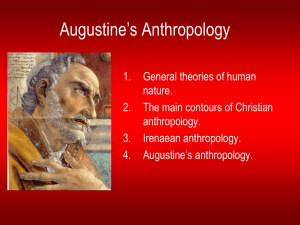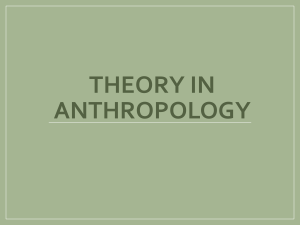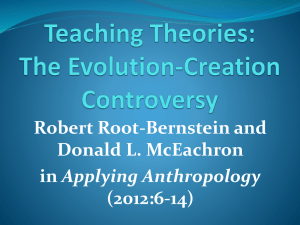Intro MedAnth
advertisement
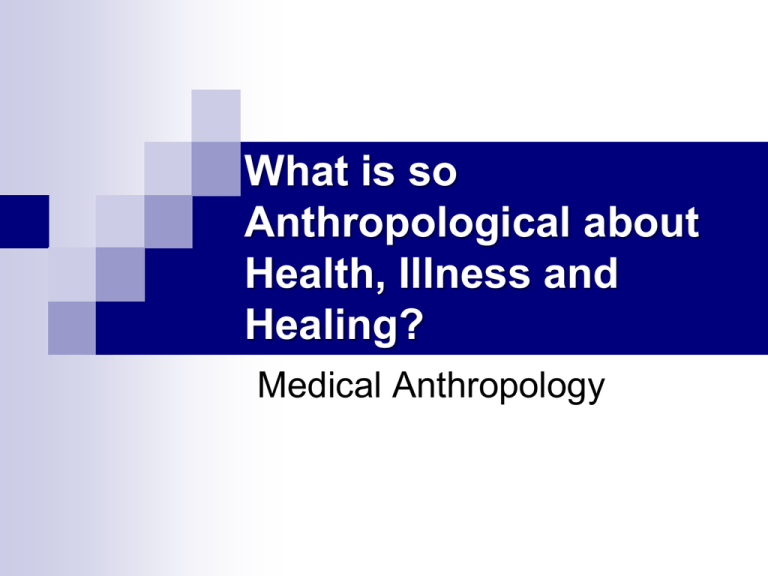
What is so Anthropological about Health, Illness and Healing? Medical Anthropology What is Anthropology Anthropos means human and logia is study so that anthropology is the study of humans The study of human differences, cultural and biological, in the context of human nature. Anthropologists identify and compare behavior of a particular group against the full range of human behavior. These comparisons should uncover principles that apply to all human communities Introduction to Medical Anthropology 2 What is Anthropology Anthropologists studied the way of life, remains, language, and physical characteristics of people -- social facts Customs, values, and social patterns of different cultures were described and sometimes compared. How are different people in different places similar and different, both biologically and behaviorally? Spotting cultural patterns requires "fresh, neutral eyes." Introduction to Medical Anthropology 3 What is Culture? How do you define it? How do you know when you’ve encountered it? Culture . . . There is a strong interest in how culture changes over time and in cross-cultural comparison that may lead to universal generalizations. Sometimes, this is called ethnology Introduction to Medical Anthropology 4 What is Culture? Culture is that database of knowledge, values, and traditional ways of viewing the world that determines much of our behavior. Social structure (personal relationships and status in groups), especially kinship and marriage networks, but also family structures and property rights are integral parts of "culture.“ Culture is a system of shared values, ideas, concepts, meanings and rules that underlie and are expressed in the ways that human beings live. Introduction to Medical Anthropology 5 It’s about a group of people… “It is the participants in a culture who give meaning to people, objects, and events. . . . It is by our use of things [and what we say, think, and feel about them] that we give them meaning.” (Stuart Hall 1997) Introduction to Medical Anthropology 6 Definitions of “Culture”a note to keep in mind In 1952, anthropologists Alfred Kroeber and Clyde Kluckhohn attempted to define culture. 160 definitions later, they stopped . . . . . . suggested that they were still not finished. Introduction to Medical Anthropology 7 Definitions of “Culture” the bottom line Kroeber & Kluckhohn (1952) realized that all of their definitions came down to three common areas Meanings, social practices, and material products What people think, what people do, and what people make Culture’s most essential feature is that it is learned. Introduction to Medical Anthropology 8 Anthropological Definitions Historical: social heritage or tradition passed on to succeeding generations Behavioral: shared, learned human behavior; a way of life Normative: ideals, values, rules for living Functional: methods of problem-solving and adapting to specific environment Structural: patterns of interrelated ideas, symbols, and behaviors Symbolic: arbitrarily assigned meanings agreed upon by a society Introduction to Medical Anthropology 9 Finding & Decoding Cultural Components of Health, Illness, & Healing Primary purpose is to uncover the historical, normative, and symbolic elements of culture Historical: where does the culture of medicine come from? How did it develop and how is it passed on? Normative: what ideals, values, and rules are inherent to the culture of medicine? Symbolic: what are the agreed-upon meanings – of the body, of health/wellness, of disease/illness, of life/death? Introduction to Medical Anthropology 10 Why study culture in medical contexts? From an anthropological perspective, culture is the single most significant evolutionary adaptation in the success of modern humans. The particular way that a community of individuals organizes itself and marshals its skills, knowledge, and energies to combat disease is a central part of culture. Introduction to Medical Anthropology 11 Why study culture in medical contexts? Improving health care in Third World contexts (whether home or abroad) requires culturally appropriate methods. What power relationship is implicit here? All countries of the world are increasingly divided into healthy upper classes and continuing unhealthy underclasses (WHO 1999). What meanings & social practices contribute to this power structure? Introduction to Medical Anthropology 12 Introduction to Medical Anthropology 13 What is so cultural about physiology and anatomy? Culture, Body and Technology The SOCIAL Body The human body has a social as well as a physical reality The shape, size and adornments of the body are a way of communicating information about the individual Introduction to Medical Anthropology 15 The Body Self and Health The social body or social self is socially constructed The body image is a representation of him/herself Introduction to Medical Anthropology 16 The Body Self and Health The health risk of such body image may damage the physiological and anatomical construction of a body Such “mutilation” of the body is a self-identification and yet prone to health risk Introduction to Medical Anthropology 17 The Symbolic Body and Health The concept of body self can is a representation of body aesthetics to the detriment of health and illness Body self is culturally constructed Introduction to Medical Anthropology 18 The Function of the Body Introduction to Medical Anthropology Beliefs about the body structure can have clinical importance, those about how it functions are probably more significant in how they affect people’s behaviors 19 The function of body and health Medical Dualism Hot-Cold Evil-Good Omen Dirty-Clean Ugly-Beautiful Balance-Imbalance Yin-Yang Kulam-Barang Medical Pluralism Western Medicine Traditional Medicine Ayurvedic Medicine Chinese Medicine Trans Medicine Introduction to Medical Anthropology 20 Cultural Language in Health (Symbolic Anatomies) Plumbing the body Heart of life Medical Technology These some terms are mystical metaphors that bear no relation to physical reality, but it is because of these metaphors that individuals expresses themselves in terms of how they explain illness and health Introduction to Medical Anthropology 21 Medical Anthropology 21st Century Introduction to Medical Anthropology 22

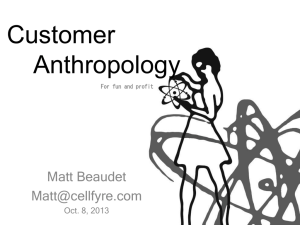
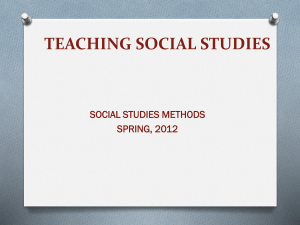
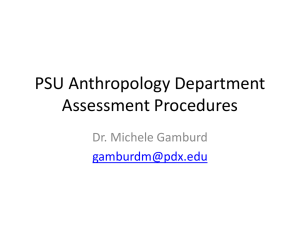
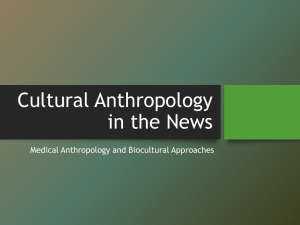
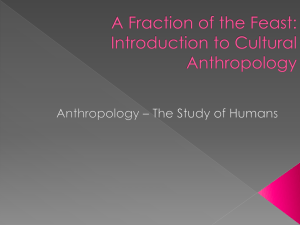
![4[1]._a_man_as_a_person](http://s2.studylib.net/store/data/005226893_1-b67b2be2c3623c1c44b6baa80b997c62-300x300.png)
